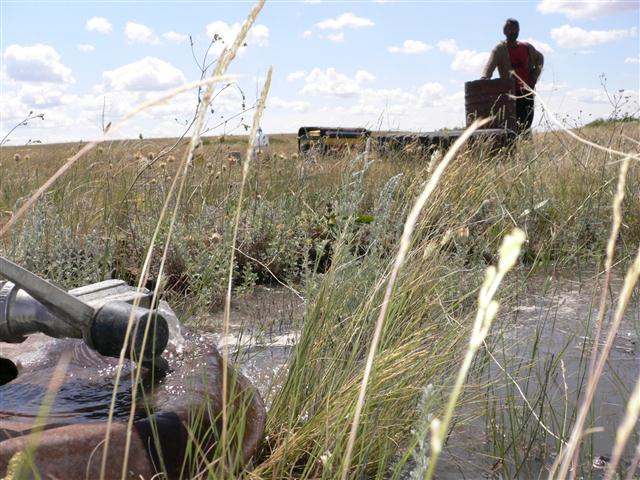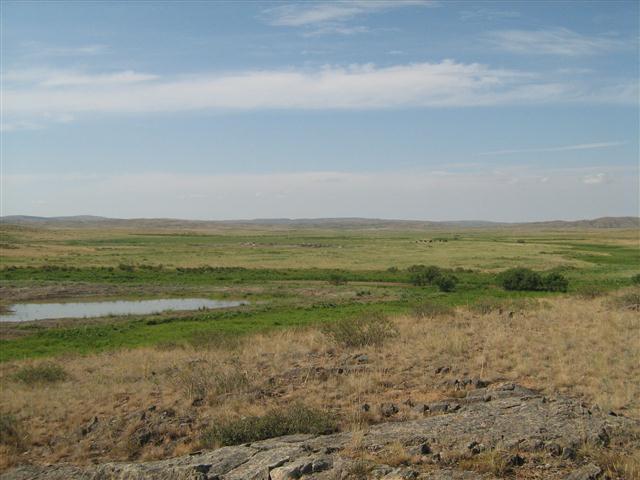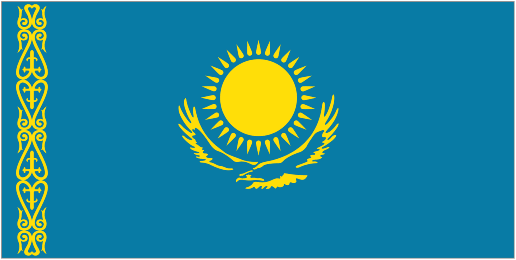CBA Kazakhstan: Climate-Resilient Horse Production in Kargaly Village
Project Overview
The village of Kargaly is located in the Akmola Oblast, approximately 100 km southwest of Kazakhstan's capital, Astana. The area is located in the transition zone between the dry and moderately-dry steppes, and the community's economy is predominantly focused on livestock, particularly on the production of horses, which are used for milk and meat. Climate change impacts have led to droughts and increasing temperature records in the past 20 years. In Akmola Oblast, temperature has increased by approximately 2ºC over the course of the 20th century. The project area has experienced declining precipitation and an increasing ratio of rainfall to snowfall. These factors reduce the sustainable stocking capacity of the pasture ecosystem, leading to the consequences of increasing predominance of inedible xerophytic plants in place of edible grass species, as well as erosion around waterpoints.
In response to the shift towards a warmer and dryer climate, this Community-Based Adaptation project rehabilitates degraded pastures while developing climate-resilient pasture management strategies. These strategies allow the communities to maintain rangeland biomass production quantity and quality in the face of increasingly adverse climate conditions. Local residents are able to implement the strategies by opening new pastures through improved resource cooperation and through the creation of new waterpoints. The project will also include capacity development components for the community, and a component on lesson sharing with government and other national stakeholders.
* This project is part of Kazakhstan's Community-Based Adaptation portfolio. *
Project Details
This Community-Based Adaptation project aims to develop a model of climate-adapted land use in the Kargaly rural community in the Korgaljin district of Akmoland to demonstrate its environmental, economic and social validity under climate change conditions. Kargaly Village, located approximately 100 km southwest of the country’s capital, Astana, is a transition zone between the dry and the moderately dry steppes. The main economic activity is livestock rearing. Horse production is primarily used for milk and meat. The project area’s climate is extremely continental and dry, with cold winters and short summers. Winter snowfall is the most important precipitation in the region, as melt-water provides the moisture required for rangeland fodder production. Declining precipitation and an increasing rainfall to snowfall ratio threaten to reduce the sustainable stocking capacity of the pasture ecosystem, to increase the predominance of inedible xerophytic plants in place of edible grass species, and to heighten erosion around water-points.
In the project area, rising temperatures and decreasing precipitation will lower the availability of water in the soil, and will reduce the resilience of pasturelands to dust storms and wind erosion. As dust storms and dry winds become more frequent, the aridity and the soil erosion will increase, stressing the natural ecosystem, and reducing the productivity of pasturelands. These climate change risks will trigger a cycle of poverty and food insecurity in the region.
This project seeks to pilot ecologically, economically, and socially sustainable techniques to prevent negative climate change consequences on pasture ecosystems used for horse breeding in Kargaly Village. The project was prepared through a participatory process carried out by YLT Tagdyry, a local NGO, which involved all the local stakeholders. The project focuses on increasing the adaptive capacity of the local community members through trainings on sustainable livestock production in the face of climate change.
The project will rehabilitate existing pasturelands and reconstruct existing watering places using a traditional Kazakh collective work method called “ASAP”. Sustainable pasture management techniques will be introduced and popularized to improve the management of local resources. The project will also facilitate conversations between community members to develop local plans and signed agreements regarding the use of lands (pastures) and water (wells) resources, as well as cooperative access to forage and water resources at remote pastures.
Key Results and Outputs
Outcome 1 (co-financing): Existing pasturelands rehabilitated
Reconstruct and rehabilitate existing watering places using traditional Kazakh “Asap” (collective work) method (Output 1.1). Rehabilitate degraded pasturelands currently in use by local community (Output 1.2).
Outcome 2 (co-financing): Foster community cooperation over local resource management
Popularize sustainable pasture management at the community level (Output 2.1), including through the development of a local plan and signed agreement between community members regarding the use of lands (pastures) and water (wells) resources (Output 2.2). Put in place an agreement granting community members cooperative access to forage and water resources at remote pastures (Output 2.3).
Outcome 3 (CBA-funded): Increased community capacity to sustainably produce livestock under climate change.
Train community on future consequences and risks related to climate change (Output 3.1), climate-resilient pasture management strategies (Output 3.2), and climate-resilient livestock watering provision practices (Output 3.3).
Outcome 4 (CBA-funded): Climatic and ecological change incorporated into livestock production and management practices
Determine of optimal load for pasturelands under current and likely future climate change conditions (Output 4.1). Implement improved pasture management plan (Output 4.2) and improved breeding/livestock management strategy (Output 4.3). Construct new watering points to spread stock loads more evenly around decreasingly resilient pastures (Output 4.4).
Outcome 5 (CBA-funded): Project results shared
Document lessons learned (Output 5.1) and disseminate this information among livestock producers, government officials, and community stakeholders (Output 5.2).
Reports and Publications
Annual Reports
PIFs
Project Brief / Fact Sheet
Monitoring and Evaluation
Monitoring and evaluation for community-based adaptation is a new field, and the CBA project is piloting innovative approaches to evaluating the success of locally-driven adaptation projects, and generating lessons to inform ongoing practice.
Key considerations in M&E for CBA include:
- Grounding M&E in the local context: M&E for CBA should avoid overly rigid frameworks, recognizing community heterogeneity and maintaining local relevance
- Capturing global lessons from local projects: CBA projects are highly contextualized, but lessons generated should be relevant to stakeholders globally
- Incorporation of both quantitative and qualitative indicators: to ground projects in tangible changes that can be objectively evaluated, and to capture lessons and case studies for global dissemination
To these ends, the CBA project uses three indicator systems: the Vulnerability Reduction Assessment, the Small Grants Programme Impact Assessment System, and the UNDP Climate Change Adaptation Indicator Framework.
The Vulnerability Reduction Assessment (VRA)
The VRA is a question-based approach with the following aims:
- To make M&E responsive to community priorities
- To use M&E to make projects more accountable to local priorities
- To make M&E capture community ideas and local knowledge
- To gather community-level feedback to guide ongoing project management
- To generate qualitative information
- To capture lessons on specific issues within community-based adaptation
- To generate case studies highlighting adaptation projects
The VRA follows UNDP's Adaptation Policy Framework, and is measured in a series of meetings with local community stakeholders. In these meetings, locally-tailored questions based on standard VRA questions/indicators are posed, and the community assigns a numerical score on a 1-10 scale for each question. Progress is evaluated through changes in scores over the course of implementation, as well as through qualitative data collected in community discussions surrounding the exercise.
UNDP has developed a Users Guide to the VRA (Espanol) (Francais) as a tool to assist practitioners to conceptualize and execute VRA measurements in the context of CBA projects.
The SGP Impact Assessment System (IAS)
The CBA, being a project of the GEF Strategic Priority on Adaptation, aims to increase the resilience of ecosystems and communities to the impacts of climate change, generating global environmental benefits, and increasing their resilience in the face of climate change impacts. To this end, the CBA projects use the SGP's impact assessment system for monitoring achievements in GEF focal areas (focusing primarily on biodiversity and sustainable land management).
The IAS is composed of a number of quantitative indicators which track biophysical ecosystem indicators, as well as policy impact, capacity development and awareness-building.
UNDP Climate Change Adaptation Indicator Framework
CBA projects also track quantitative indicators from UNDP's adaptation indicator framework, corresponding to the thematic area on natural resources management. More information on UNDP's indicator framework can be found on the UNDP climate change adaptation monitoring and evaluation website.
* This description applies to all projects implemented through UNDP's Community-Based Adaptation programme. Specific details on this project's M&E will be included here as they become available. *






